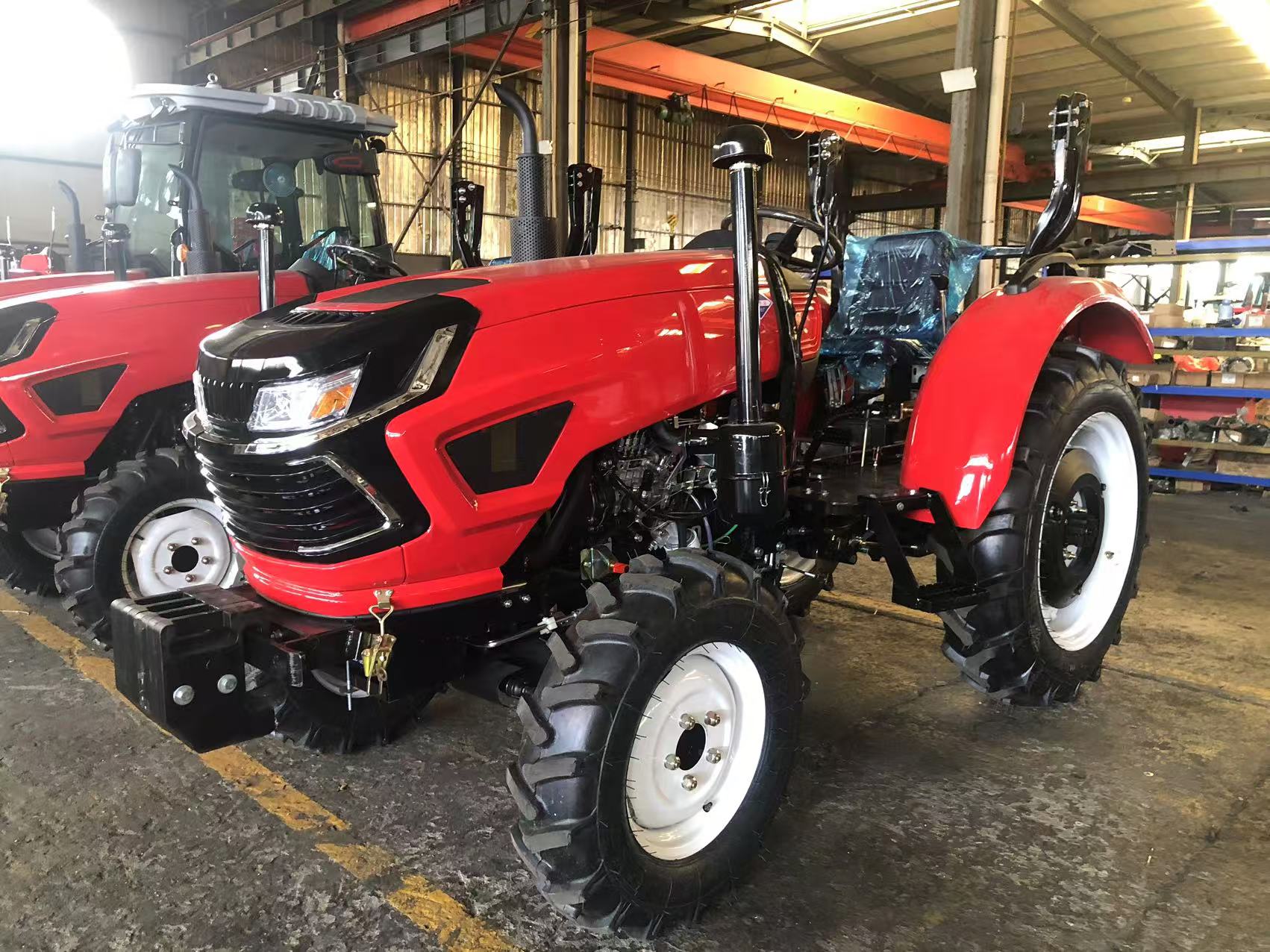New Camel Union Tractor Operation Guide: Efficiency and Safety Combined
The proper operation of a tractor is crucial for maximizing both efficiency and safety. New Camel Union’s tractors offer powerful solutions for agricultural tasks, but understanding how to operate them effectively is key. In this guide, we’ll cover essential operation tips and safety measures to ensure smooth and safe use of New Camel Union tractors.
New Camel Union Tractor Operation Tips
Smooth Start for a Strong Beginning
Before starting the New Camel Union tractor, it is essential to thoroughly check the surroundings. In rural fields or on roads, obstacles like pedestrians, vehicles, or debris might be present. Once the environment is clear, close the door and signal to others using the horn or hand gestures. When starting the tractor, disengage the clutch quickly and shift to the correct gear smoothly, avoiding abrupt or forced shifts. If you encounter difficulty shifting, disengage the clutch, re-engage it gently, and try again.
Once in gear, gradually increase the throttle while slowly engaging the clutch. Follow the principle of fast-first, slow-second, starting with a faster engagement to allow the tractor to gain momentum before fully engaging the clutch. During operation, avoid keeping the clutch pedal depressed unnecessarily, as this can cause unnecessary wear on the clutch components.
Efficient Gear Shifting for Different Working Conditions
Selecting the correct gear is crucial to optimize the tractor's performance. Lower gears offer higher torque, ideal for tasks like heavy plowing or uphill driving, while higher gears increase speed, suitable for smoother terrains. To shift from a low to a high gear, first accelerate, press the clutch, and move the gear lever to neutral. After a brief clutch engagement, shift to the higher gear smoothly. For high-to-low gear shifts, decrease speed, disengage the clutch, and switch to the lower gear after briefly pressing the clutch again.
Agile Steering for Complex Terrain
For New Camel Union’s tracked tractors, steering involves pulling the control lever to one side. To make tight turns, fully pull the lever and apply the brake on the corresponding side. For wheeled tractors, slow down before turning and make gradual adjustments to the steering wheel. In sharp turns, the wheel should be turned quickly and decisively to prevent tipping.
Cautious Reversing for Safety
Reversing a tractor can be tricky, requiring full attention and a controlled speed. Always reverse in low gear with minimal throttle. Keep an eye on the surroundings through mirrors or by turning your head, ensuring no obstacles are in the way.
Safe Braking Techniques
There are two main types of braking in New Camel Union tractors: engine braking and brake pedal braking. Use engine braking by easing off the throttle to slow the tractor down. For more controlled braking, combine engine and brake pedal use, gradually coming to a stop. In emergencies, engage the brakes quickly while simultaneously disengaging the clutch to stop as quickly as possible.
New Camel Union Tractor Safety Considerations
Pre-Start Inspection
Before starting the tractor, perform a thorough inspection. Check the oil and fuel levels to ensure there is enough for operation. Additionally, confirm that the gear lever is in neutral to avoid sudden movements. Always ensure that the tractor has adequate coolant, especially before winter use, as insufficient coolant can overheat the engine.
Safety During Operation
Always stay alert while operating the tractor, monitoring gauges such as engine speed, water temperature, and oil pressure. Adhere to traffic rules and maintain safe distances from other vehicles and pedestrians. Never overload the tractor, as this can increase braking distance and instability.
Safe Operation While Working in Fields
When working in fields, adjust the tractor's speed and depth according to the soil conditions and tasks. Avoid obstacles like rocks or tree stumps, which can cause damage. Ensure the tractor remains balanced, especially on uneven terrain. If necessary, adjust the load or use counterweights to maintain stability.
Post-Operation Inspection and Maintenance
After finishing work, perform a detailed inspection of the tractor, checking for any damage or wear. Clean the tractor thoroughly to remove dirt, oil, and debris, as buildup can cause component damage. Regularly check the tires, connections, and engine for any signs of leaks or damage. If any issues are found, address them promptly to ensure long-term functionality.
Conclusion
New Camel Union tractors offer robust performance, but safety and efficiency depend on proper operation. By following these guidelines and regularly maintaining the tractor, operators can enhance productivity, prolong the life of their equipment, and ensure the safety of those involved in agricultural tasks.
Need a Tractor or Agricultural Machinery Solution?
→ Contact our global selection team: +86 158 5359 1391. We offer accessory customization and technical consultations.








